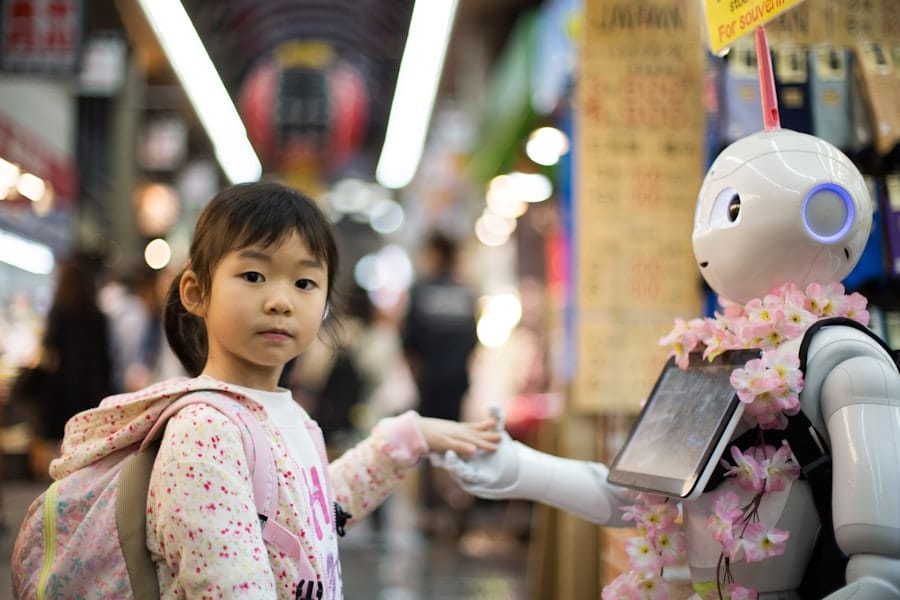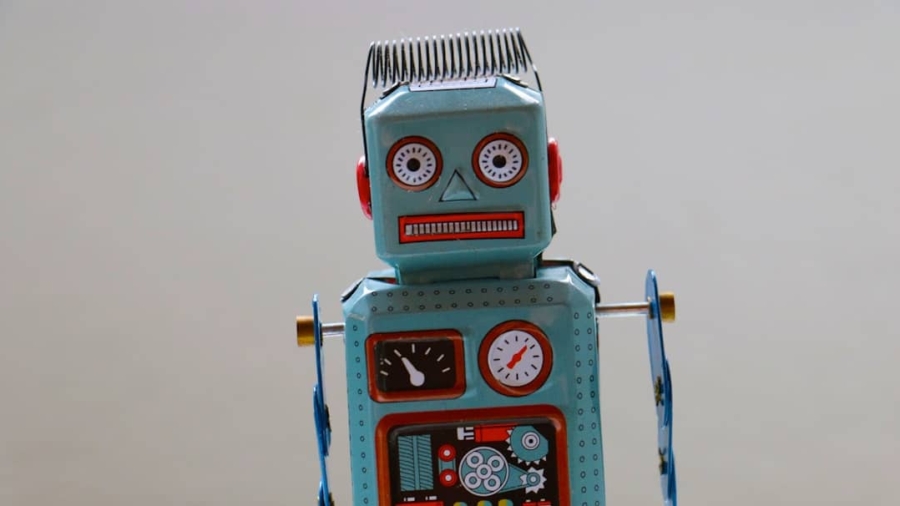The advent of artificial intelligence (AI) has revolutionized numerous sectors, and disaster risk reduction (DRR) is no exception. AI-powered robotics are increasingly being integrated into DRR strategies, providing innovative solutions that enhance preparedness, response, and recovery efforts. These advanced technologies leverage machine learning, computer vision, and autonomous navigation to perform tasks that were once deemed too dangerous or impractical for human responders.
As natural disasters become more frequent and severe due to climate change, the need for effective and efficient disaster management tools has never been more pressing. AI-powered robotics can significantly improve the speed and accuracy of disaster response efforts. By automating various processes, these robots can gather real-time data, analyze complex environments, and execute tasks with precision.
For instance, drones equipped with AI algorithms can survey disaster-stricken areas, providing critical information that aids in decision-making. The integration of robotics into DRR not only enhances operational efficiency but also minimizes risks to human life, allowing responders to focus on strategic planning and coordination.
Key Takeaways
- AI-powered robotics play a crucial role in disaster risk reduction by providing advanced technology for early warning systems, search and rescue operations, damage assessment, and infrastructure monitoring.
- Early warning systems benefit from AI-powered robotics by analyzing data and providing real-time alerts, improving the ability to predict and prepare for disasters.
- AI-powered robotics enhance search and rescue operations by utilizing advanced sensors and algorithms to locate and assist survivors in disaster-affected areas.
- Damage assessment and response efforts are improved with AI-powered robotics, as they can quickly and accurately assess the extent of damage and prioritize response efforts.
- AI-powered robotics facilitate communication and coordination in disaster response by providing real-time data and analysis to emergency responders, improving overall efficiency and effectiveness.
Utilizing AI-Powered Robotics for Early Warning Systems
Early warning systems (EWS) are crucial for mitigating the impacts of disasters by providing timely alerts to communities at risk. AI-powered robotics play a pivotal role in enhancing the effectiveness of these systems. By utilizing advanced sensors and data analytics, these robots can monitor environmental conditions in real-time, detecting anomalies that may indicate impending disasters such as floods, earthquakes, or wildfires.
For example, ground-based robots equipped with seismic sensors can detect tremors and provide early warnings to nearby populations, potentially saving countless lives. Moreover, AI algorithms can analyze vast amounts of data from various sources, including satellite imagery and weather forecasts, to predict disaster occurrences with greater accuracy. This predictive capability allows for proactive measures to be taken, such as evacuations or resource allocation, thereby reducing vulnerability.
The integration of robotics into EWS not only enhances the speed of data collection but also improves the reliability of predictions, ensuring that communities receive timely and actionable information.
AI-Powered Robotics in Search and Rescue Operations

In the aftermath of a disaster, search and rescue operations are critical for locating survivors and providing immediate assistance. AI-powered robotics have transformed these operations by enabling responders to navigate hazardous environments more effectively. Drones equipped with thermal imaging cameras can identify heat signatures from trapped individuals beneath rubble or in remote areas, significantly increasing the chances of successful rescues.
These aerial robots can cover large areas quickly, providing real-time situational awareness to rescue teams on the ground. Additionally, ground-based robots can be deployed in environments that are too dangerous for human responders. For instance, robotic dogs equipped with cameras and sensors can traverse debris-laden landscapes, relaying vital information back to command centers.
The use of AI in these robots allows them to adapt to changing conditions and make autonomous decisions about navigation and obstacle avoidance. This capability not only enhances the efficiency of search operations but also reduces the physical and psychological toll on human rescuers.
The Role of AI-Powered Robotics in Damage Assessment and Response
Following a disaster, assessing damage is essential for effective recovery planning and resource allocation. AI-powered robotics streamline this process by providing accurate and comprehensive assessments of affected areas. Drones equipped with high-resolution cameras can capture detailed aerial imagery, which can then be analyzed using AI algorithms to identify structural damage and assess the extent of destruction.
For example, underwater drones can be deployed to assess damage to submerged infrastructure after a flood or tsunami.
These robots can navigate challenging underwater terrains while collecting data on structural integrity and environmental conditions. The ability to gather such information quickly allows for timely interventions and repairs, ultimately reducing the long-term impacts of disasters on communities.
Enhancing Communication and Coordination with AI-Powered Robotics
Effective communication and coordination among various stakeholders are vital during disaster response efforts. AI-powered robotics can enhance these processes by providing real-time data sharing and situational awareness across different agencies and organizations. For instance, command centers can utilize drones to relay live video feeds from disaster sites, allowing decision-makers to assess situations remotely and make informed choices about resource deployment.
Moreover, AI algorithms can facilitate communication between different robotic systems deployed in the field. For example, a fleet of drones and ground robots can work collaboratively to gather data and share findings with each other autonomously. This interconnectedness ensures that all units operate with a unified understanding of the situation on the ground, improving overall efficiency in response efforts.
By breaking down silos between agencies and enhancing collaboration through technology, AI-powered robotics foster a more coordinated approach to disaster management.
AI-Powered Robotics for Infrastructure Monitoring and Maintenance

Autonomous Inspections for Enhanced Safety
Robotics equipped with AI capabilities can conduct these inspections autonomously, utilizing advanced sensors to detect structural anomalies or signs of wear. This approach eliminates the risk of human inspectors being injured or killed during the inspection process.
Drones: The Ideal Solution for Hard-to-Reach Areas
For instance, drones can be employed to inspect hard-to-reach areas of infrastructure without putting human inspectors at risk. They can capture high-resolution images and use machine learning algorithms to analyze these images for potential issues such as cracks or corrosion.
Proactive Maintenance for Preventing Catastrophic Failures
This proactive approach not only enhances safety but also allows for timely maintenance interventions that can prevent catastrophic failures during disasters. By identifying potential issues early on, AI-powered robotics can help prevent devastating consequences and ensure the resilience of critical infrastructure.
Challenges and Opportunities in Implementing AI-Powered Robotics for Disaster Risk Reduction
Despite the promising potential of AI-powered robotics in disaster risk reduction, several challenges must be addressed for widespread implementation. One significant hurdle is the high cost associated with developing and deploying advanced robotic systems. Many organizations may struggle to secure funding for such technologies, particularly in regions where resources are already limited due to frequent disasters.
Additionally, there are concerns regarding the reliability and accuracy of AI algorithms used in robotic systems. Ensuring that these technologies function effectively in diverse environments is crucial for their success in real-world applications. Rigorous testing and validation processes must be established to build trust among stakeholders who rely on these systems during critical moments.
However, these challenges also present opportunities for innovation and collaboration. As technology continues to advance, costs are likely to decrease, making AI-powered robotics more accessible to a broader range of organizations. Furthermore, partnerships between governments, private companies, and research institutions can foster knowledge sharing and drive advancements in robotic technologies tailored for disaster management.
The Future of AI-Powered Robotics in Disaster Risk Reduction
The future of AI-powered robotics in disaster risk reduction holds immense promise as technology continues to evolve. As we face an increasingly uncertain climate landscape characterized by more frequent natural disasters, the integration of robotics into DRR strategies will become essential for enhancing resilience and safeguarding communities. The ability of these systems to provide real-time data collection, improve situational awareness, and facilitate efficient response efforts positions them as invaluable assets in the fight against disasters.
As we look ahead, it is crucial to prioritize research and development in this field while addressing the challenges that may hinder implementation. By fostering collaboration among stakeholders and investing in innovative solutions, we can harness the full potential of AI-powered robotics to create safer environments and mitigate the impacts of future disasters effectively. The journey toward a more resilient future is underway, driven by the transformative capabilities of technology in disaster risk reduction efforts worldwide.
A related article to How AI-Powered Robotics Is Supporting Disaster Risk Reduction Strategies can be found in the article Exploring the Features of the Samsung Notebook 9 Pro. This article discusses the innovative features of the Samsung Notebook 9 Pro, highlighting how technology continues to advance and improve various aspects of our lives. Just as AI-powered robotics are revolutionizing disaster risk reduction strategies, the Samsung Notebook 9 Pro showcases how cutting-edge technology can enhance productivity and efficiency in everyday tasks.
FAQs
What is AI-powered robotics?
AI-powered robotics refers to the use of artificial intelligence (AI) to control and operate robotic systems. These systems are designed to perform tasks autonomously or with minimal human intervention, using AI algorithms to make decisions and adapt to their environment.
How is AI-powered robotics used in disaster risk reduction strategies?
AI-powered robotics is used in disaster risk reduction strategies to assist in various tasks such as search and rescue operations, damage assessment, and infrastructure inspection. These robots can navigate through hazardous environments, collect and analyze data, and provide valuable information to aid in disaster response and recovery efforts.
What are the benefits of using AI-powered robotics in disaster risk reduction?
The use of AI-powered robotics in disaster risk reduction offers several benefits, including the ability to access hard-to-reach areas, reduce the risk to human responders, gather real-time data for decision-making, and improve the efficiency and effectiveness of disaster response efforts.
What are some examples of AI-powered robotics used in disaster risk reduction?
Examples of AI-powered robotics used in disaster risk reduction include unmanned aerial vehicles (UAVs) for aerial surveys and reconnaissance, unmanned ground vehicles (UGVs) for search and rescue operations, and autonomous underwater vehicles (AUVs) for underwater inspections and mapping in the aftermath of a disaster.
What are the challenges of using AI-powered robotics in disaster risk reduction?
Challenges of using AI-powered robotics in disaster risk reduction include the high cost of development and deployment, the need for specialized training and expertise to operate the systems, and the potential for technical failures or malfunctions in high-stress disaster scenarios.

